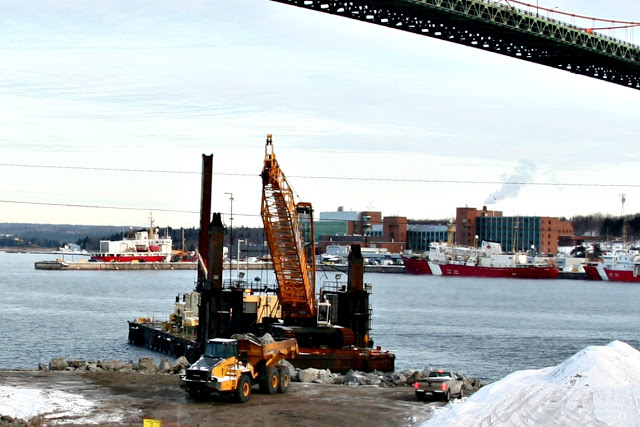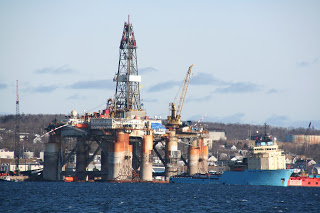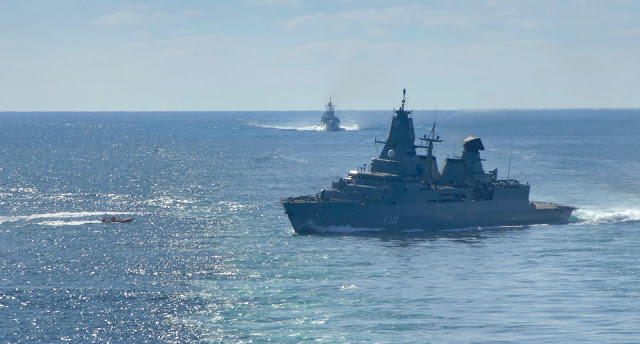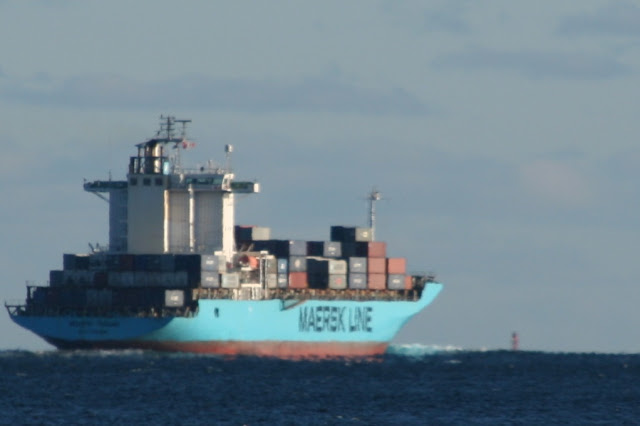Yearly Archives: 2013
Pier 9 expansion work continues
Are we prepared for a major offshore oil spill?
Lief Ericson To the Nova Dock
Ville de Quebec on International Exercises.
HMCS Ville De Quebec is taking part in an composite training unit exercise (COMPTUEX) with the Aircraft Carrier USS Harry Truman, as a memeber of the 1st Combined Destroyer Squadron (1CDS) 1CDS members currently include USS Barry (DDG 52), USS Gravely (DDG 107), the German ship FGS Hamburg (F220), and the Canadian ships HMCS Ville De Quebec (FFH 332) and HMCS Preserver (AOR 510); USS Monterey (CG 61), USS Gettysburg (CG 64), and USS Kauffman (FFG 59).
COMPTUEX is a series of training scenarios designed to certify HSTSG as a deployment-ready fighting force capable of completing operations in overseas theaters. The exercise will be evaluated and graded by Commander, Strike Force Training Atlantic (CSFTA) through warfare scenarios that will include simulated surface, air undersea, strike and electronic attacks.
In addition, events such as maritime interception operations (such as visit, board, search and seizure [VBSS]), live-fire evolutions, and strike group formations will also be assessed by CSFTA.
German frigate FGS Hamburg (F220) (front) and Canadian frigate HMCS Ville de Quebec (FFH 332) move in formation during a simulated strait transit. Hamburg and Ville de Quebec are underway with aircraft carrier USS Harry S. Truman (CVN 75) conducting a composite training unit exercise in preparation for 1st Combined Destroyer Squadron’s (1CDS) upcoming deployment. (U.S. Navy photo by Mass Communication Specialist Seaman Apprentice Kameren Guy Hodnett/Released)
Lyubov Orlova adrift in international Waters
It appears the Lyubov Orlova will simply drift away to become another countries problem. After being towed away from the Searose FPSO by Atlantic Hawk, the Tow was handed off to Maersk Challenger, another St John’s based AHST, chartered by Transport Canada.
Rather then return the ship to Port – no port appeared willing to accept the Lyubov Orlova, Maersk challenger, towed her beyond the 200nm limit, and cut her free in international waters. The Lyubov Orlova will drift untill she is Sunk by weather, hits another country, or is claimed by her owners.
Transport Canada maintains that the vessel is still the responsibility of her owners; The Owners likely will not go after the vessel as the cost will be more the the value of the vessel; and if she doesnt sink, the Lyubov Orlova will become another countries problem.
Given the rash of scrap vessels going adrift, The federal Government should pass a law requiring any vessel being towed from within Canadian territorial waters, to outside to carry sufficient insurance for recovery, prior to being allowed to leave port.
UPDATE: It is now reported that the Maersk Challenger took the tow, however the Tow line parted in heavy seas. It was decided to let the Lubov Orlova drift, as she was no longer a danger to off shore installations, nor in Canadian Waters. The owner claims he intends to recover the vessel, however Transport Canada forbids him from doing so with the Charlene Hunt.
Arrivals
Halifax Shipyard Buys land from Province
Irving Shipbuilding will buy a Barrington Street water lot that has been leased from the province for $1 every five years since 1982. The lot is surrounded by a larger water lot already owned by Irving Shipbuilding. This purchase is necessary for the company to meet requirements for the federal government’s National Shipbuilding Procurement Strategy. The lease was transferred to Irving Shipbuilding when it bought the shipyard in 1994.
An independent assessment was completed by Turner Drake. The market value of the property was determined to be $95,000. Irving Shipbuilding must purchase the lot to have a deed of licence as it starts federal shipbuilding projects.
Based on the description, I would assume the lease is the area where the Scotia Dock II was located.






